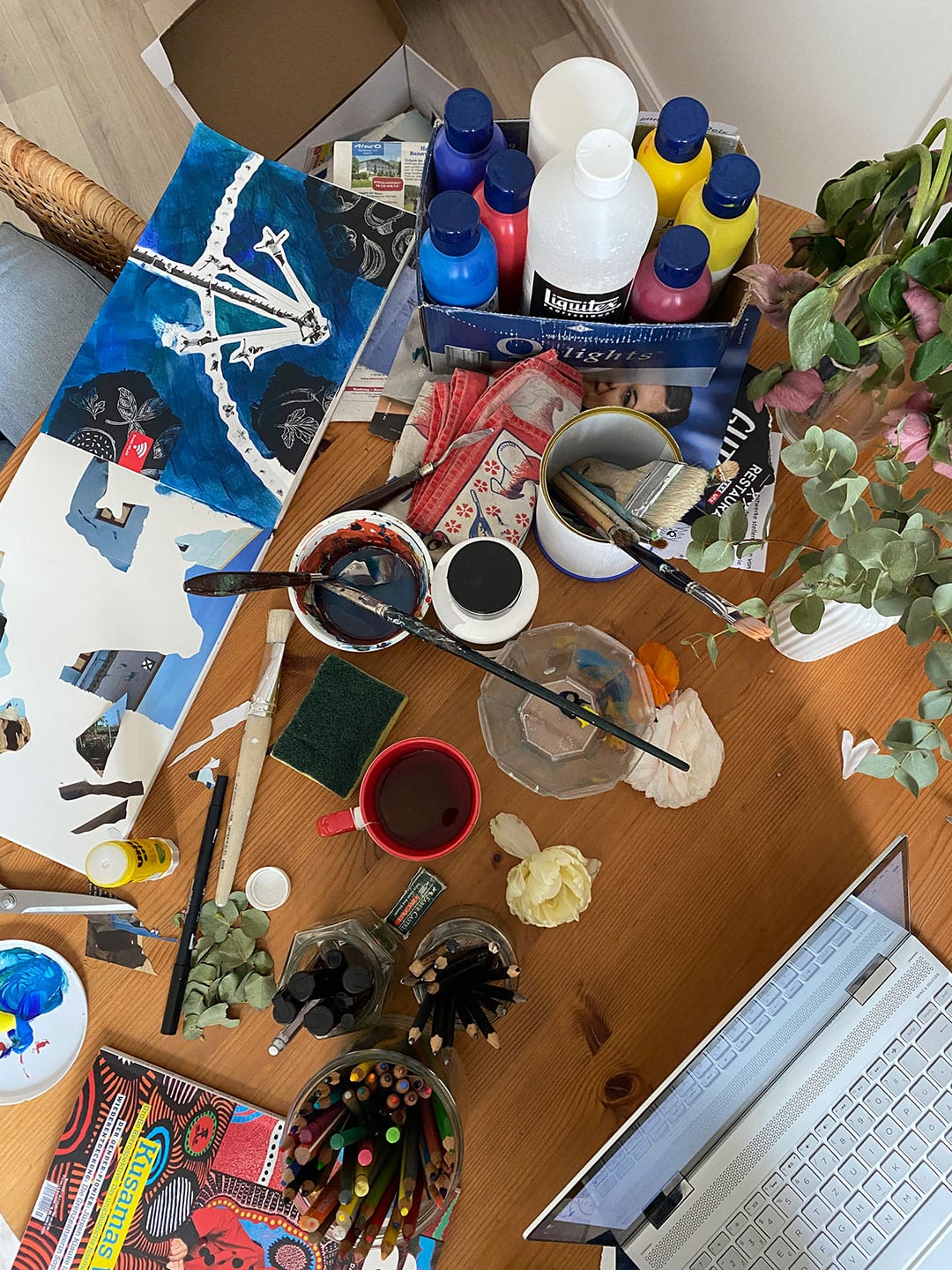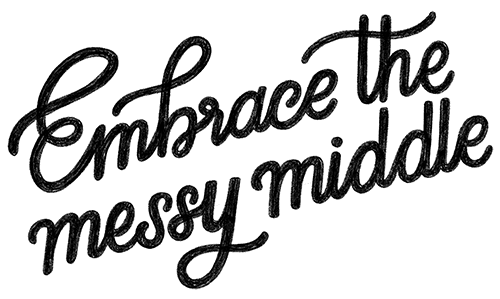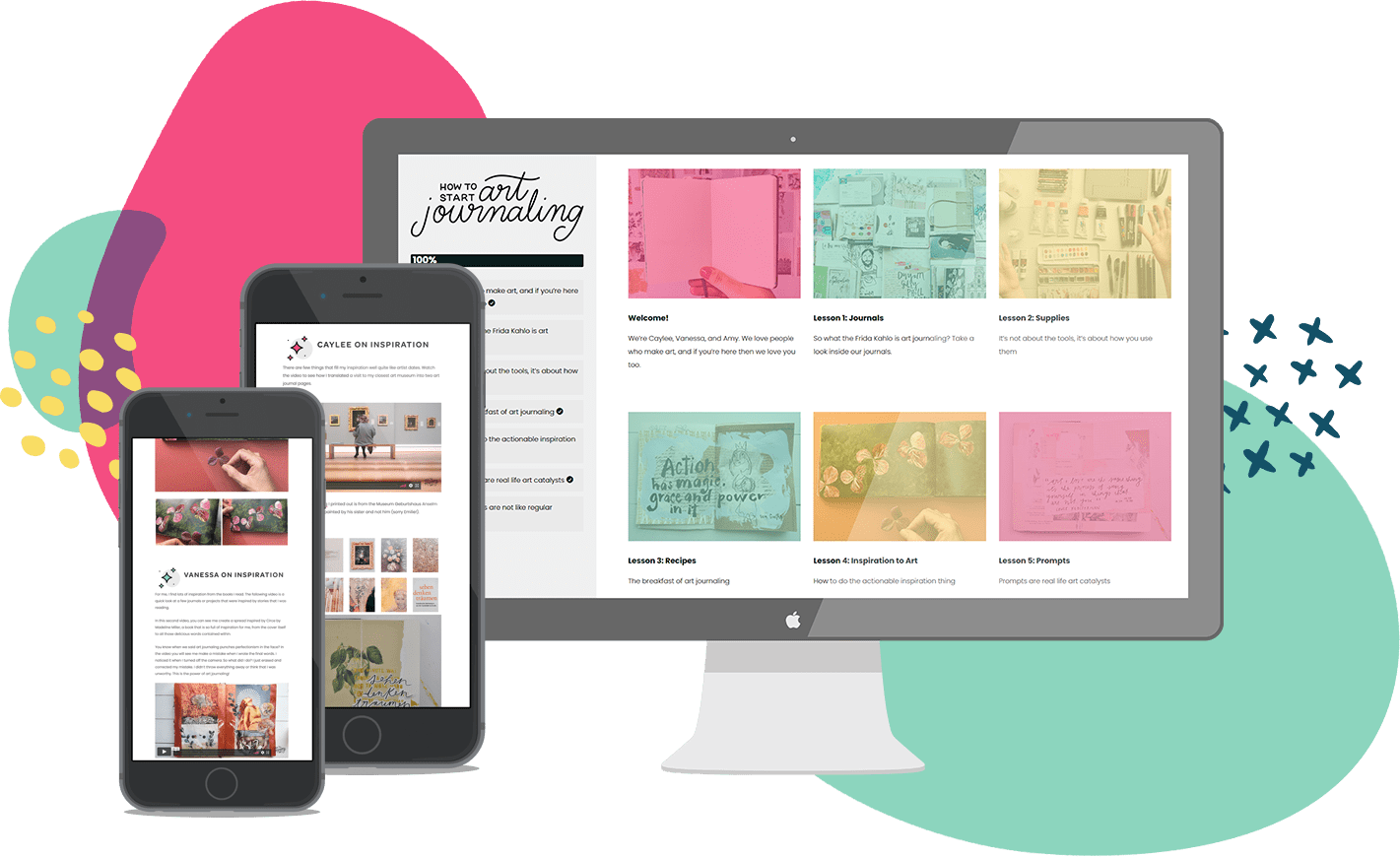The life of a creative can be lonely. And let’s face it: whether we identify as creatives or not, we all know what this pretty rubbish state of being feels like. As humans, we’re hard-wired for connection: we long to be understood by others, we long for relationships with people with whom we can go through our struggles and celebrate life’s wins. This blog post presents 7 ways towards feeling less alone as a creative. And the best part is – perhaps counter-intuitively – many of these can be done without interacting with a single other human in real time.
The Pit of Loneliness and Despair
And as creatives, we are struck with an interesting paradox: while we create in order to feel connected to ourselves and to the world around us, so often it seems that our creativity is the very thing that flings us into the Pit of Loneliness and Despair. If this sounds dramatic, well – damn, the Pit of Loneliness and Despair very well is.
We identify so strongly with our creative practice. So, when we find ourselves physically, socially or emotionally isolated in or through it, it feels like a rejection of the very core of who we are. It hurts, and it feels personal. Caught in that downward spiral, our thoughts swirl and descend into some kind of mix-n-match horror goodie bag of the following: Nothing you make is good enough. No one understands your work, no one understands how important your creativity is to you, and the worst bit: no one really understands you. You’ve chosen the wrong path in life; it’s too painful. Better to find the exit-door to the creative life while you still can. And soon enough you realise that the sickening, sneaking suspicion that was growing inside you all this time was actually, very probably, right: yep. Called it. There is definitely something wrong with me.
First, let me assure you that – if you have felt or are feeling any of the above – you’re not alone. At least one other person has felt those things…being me.
Yep. So let’s talk about ways to start getting out of the Pit.
Ways out of the Pit
1. Spend focused time alone
Yep, that’s right, I want you to begin by spending a liiiiittle bit more time alone. I’m throwing you into the deep end with my most out-there-sounding suggestion because I also believe it to be the very best suggestion I have. And here’s why: true connection with others begins with finding a connection to ourselves.
So sit with yourself. Sit with your feelings. Ask yourself what you could do that would be nourishing, energising or fun right now. Go on a walk or a run. Take yourself on an Artist Date. Read. Write. Watch that movie that you’ve been wanting to watch for ages…or that movie that always reminds you of who you are. Remember, self-care goes way beyond the classic list of “have a bath, do a face mask”. What things make you feel comforted, inspired, alive? This is about you connecting with yourself, listening to yourself and not having to wrestle yourself into anything. So find what feels good (thanks, Adriene) and follow that.
2. Read books about art, creativity and the creative process
I’m baffled that, although having dedicated my life to the arts from a young age, I’ve only recently started reading books about creativity and the creative process. Maybe I didn’t really realise they existed, and maybe I was busy with other things. But more likely, I probably assumed that creativity and talent were just things that were kind of nebulous and undefinable…and that reading a creative self-help book would be admitting to myself that I needed help…and that admitting that to myself would be too painful.
Damn, how wrong I was. And damn, are there some crackers out there.
There are a million books out there specifically for creatives, specifically about creativity. Through these, we catch a glimpse of artists and creatives across time who have been through the same things that we are going through. Pretty quickly you will find out that it’s not just you who struggles with ideas. It’s not just you who feels afraid of reaching too high or of failing or of making bad art. It’s not just you who feels alone or misunderstood by those around you.
Here are a few to get you started.
- Big Magic by Elizabeth Gilbert
- Do the Work by Stephen Pressfield
- The Artist’s Way by Julia Cameron
- Art and Fear by David Bayles and Ted Orland
3. Find podcasts you click with and listen, listen, listen
Just like with books, there is a massive and delightful array of podcasts out there about creatives and creativity. They’re free and current. No matter your creative niche, there’ll be a podcast out there for you; no matter your situation, there are other people in the world, right now, who are thinking about and experiencing the very same…and making a podcast about it. The direct, casual and conversational nature of podcasts brings bonus points – we get a glimpse into the podcasters’ lives and thoughts and humanity, and more often than not they end up feeling like friends. Of course, topic, tone and personality are important. You need to find a podcast host you can click with; someone you feel inspired or comforted or challenged by. A podcast you can ride the wave of new ideas with.
For me, podcasts are the ultimate connecting force: one episode might point me to a range of different interests, people, blogs, books and ideas. Plus, they’re awesome company to bring along on your creative projects – I love listening to my favourite podcasts while I paint.
Here’s a selection of my favourite.
- Routines and Ruts by Madeleine Dore
- The Get Messy Podcast by Caylee Grey, our Get Messy Fairy Artmother
- Talking with Painters by Maria Stoljar
- Kick in the Creatives by Sandra Busby and Tara Roskell (PS. For a podcast double-whammy…listen to the Get Messy podcast episode with Sandra and Tara)
4. Find a studio / coworking space
A lot of us create in the privacy of our own homes. While our homes can often feel like the safest spaces to create in – and, of course, the most budget-friendly – it can lead to a sense of isolation in our creative practice. Not only are we physically isolated; we’re not necessarily sharing that part of our lives with other people, either.
If your budget allows it, renting a coworking or studio space can be a great way to connect with other creatives. I moved into my first ever studio about three months ago; it’s a bright room in a building of mixed creative businesses. Having my own room suits me well as I’m able to focus best on my creative work when I’m not completely surrounded by other people – but chatting with the others in the building about we’re up to, how our work is going, whatever – is always a welcome break, and helps me to feel less alone in my creative work. I love having a space away from home where I can go to spend focused time on my writing and artmaking practice. Even the simple act of leaving my home and riding my bike to the studio makes me feel more connected to the outside world.
Listen to Get Messy Fairy Artmother Caylee talking about her love affair with her studio space.
5. Grab a friend
Got any friends who are creatives? Set a date with them to work on your projects together, to share your work with each other or to talk about your creative pursuits. This could be a one-off thing, or something you both decide to create some sort of structure around. Either way, having a buddy you can chat to about this stuff with is golden.
Recently a friend and I have been organising writing days every couple of weeks. It’s a chance for us to set aside some time to write – on our own individual projects, but in each other’s company. Yes, we often end up talking a LOT and writing comparatively little. Despite the amount of work that doesn’t actually get done on our writing days, I can tell you that, without a doubt, each of us feels more connected and less alone in our creativity.

6. Join a group
Just like hanging with a creative friend, joining a group of people with similar interests, ideas, values or creative pursuits is a sure-fire way to replace those lonely vibes with delightful, flowy, connect-y ones. The process of finding a group you connect with can be a tricky one, but well worth it. They’re more than just people to chat with – over time, they become a support network: people to celebrate the wins with, and to help through the struggles. The power of community is real.
It doesn’t even have to be a group of people doing exactly the same thing as you. Madeleine Dore’s Side Project Sessions, for example, started off as an event series “designed to help people find time, space and quiet for the big and little things they’re putting off”. The existence of such groups is testament to the fact that we are not alone in our need for time, space and encouragement of/for our creative pursuits.
Online groups allow us to connect with others regardless of our location (or the most recent social-distancing regulations). The Get Messy Community connects regularly via an online forum, structured events, and informal, community-led hangouts.
7. Create a group
Can’t find a group that you jive with? Create one. Some groups are less structured, and some groups happen organically. Whether online or face-to-face, all you need is an idea and a minimum of one other person to make it happen.
Creation of an upward spiral
Yes, the creative life can be lonely, but we need not do it all alone.
Remember that feeling alone has everything to do with connection (or, more accurately, a lack thereof): connection with yourself, with other people, and with the world around you. So look for connection. Start by connecting to yourself, and move out from there.
And remember that downward spiral I mentioned earlier? Well…we might not talk about them as much, but upward spirals exist, too.




